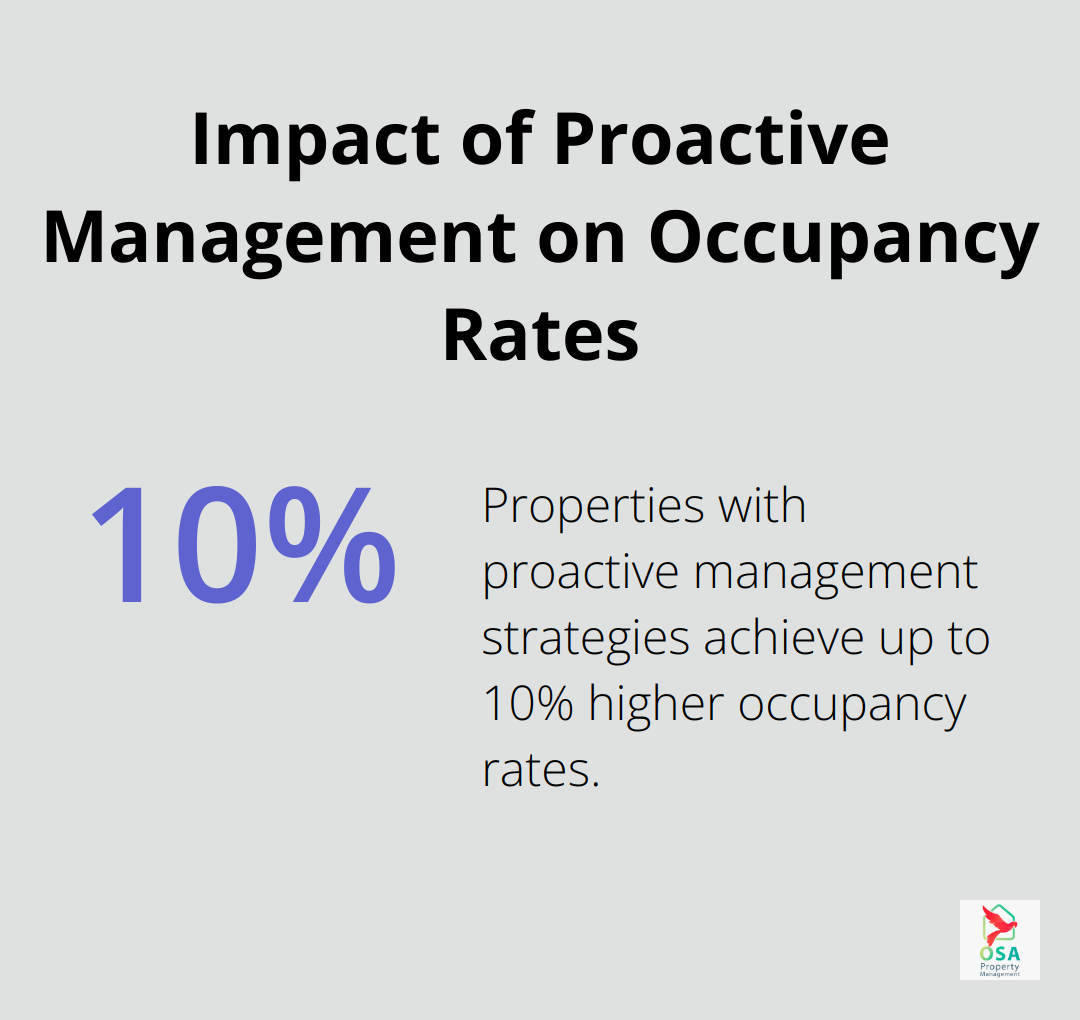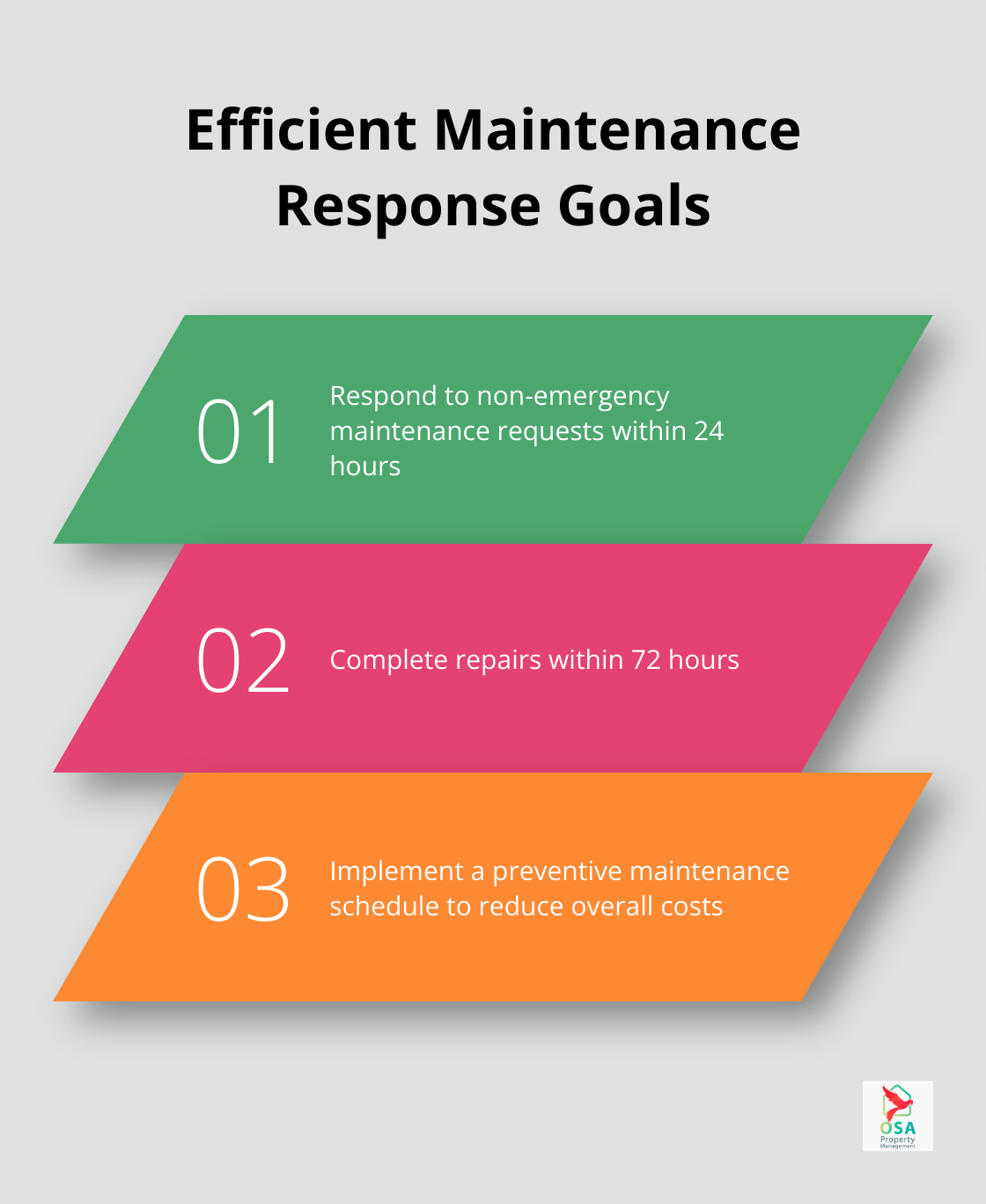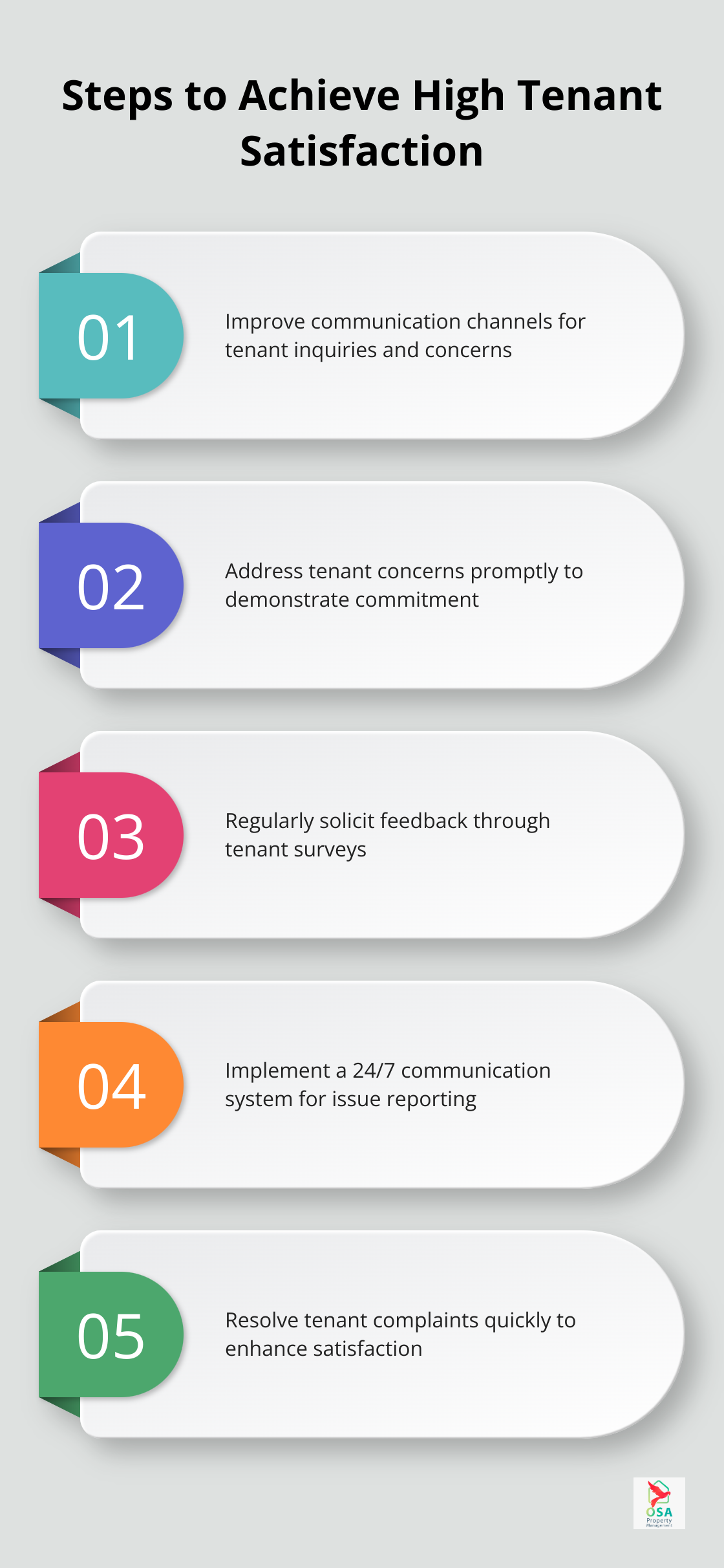At Osa Property Management, we know that setting clear goals is the cornerstone of successful property management. Effective goal-setting can drive growth, improve efficiency, and boost client satisfaction.
This comprehensive guide will explore sample goals for property managers and provide strategies for achieving them. Whether you’re looking to increase occupancy rates, streamline maintenance processes, or enhance financial performance, we’ll help you create a roadmap for success.
Why Property Management Goals Matter
Driving Strategic Business Growth
At Osa Property Management, we understand the transformative power of clear, purposeful goals in property management operations. Goals act as a compass, directing decisions and actions towards desired outcomes. They form the foundation of a strategic approach to property management.
Property management goals should directly support your overall business strategy. If you plan to expand into new markets, you might set a goal to increase your property portfolio through strategies like refinancing or taking out a home equity line of credit. This alignment ensures that every action at the property level contributes to the bigger picture.
Measuring Success Through Concrete Benchmarks
Goals provide tangible benchmarks to measure progress. Without specific targets, it becomes difficult to determine the effectiveness of your property management efforts. For instance, setting a goal to reduce maintenance response times can give you a clear metric to track and improve upon.
Focusing on Client Satisfaction
Client-focused goals play a vital role in property management. They help you stay attuned to tenant and owner needs, which often leads to higher retention rates. A study by the National Apartment Association revealed that properties with proactive management strategies achieve 5-10% higher occupancy rates than their counterparts.

Tailoring Goals to Unique Property Needs
Effective goal-setting in property management isn’t a one-size-fits-all approach. It requires a deep understanding of specific properties, market conditions, and client expectations. Property managers should tailor their goals to each unique property and owner, ensuring that efforts always align with the best interests of their clients.
Adapting to Market Changes
The property management landscape constantly evolves. Goals help property managers stay ahead of market trends and adapt their strategies accordingly. For example, a goal to implement sustainable practices (such as energy-efficient upgrades) can keep properties competitive in an increasingly eco-conscious market.
As we move forward, let’s explore the key areas where property managers should focus their goal-setting efforts to maximize success and drive continuous improvement.
What Are Key Focus Areas for Property Management Goals?
Maximizing Occupancy and Retention
Property managers should prioritize high occupancy rates and minimal tenant turnover. To achieve this, property managers should set specific targets for occupancy rates and implement strategies to enhance tenant satisfaction.
Rent discounts, unit upgrades, and personalized incentives can motivate tenants to renew their leases and enhance long-term residency. This approach can help in maximizing occupancy rates and minimizing tenant turnover.
Enhancing Maintenance Efficiency
Efficient maintenance is essential for tenant satisfaction and property value preservation. Property managers should set goals to reduce response times and increase preventive maintenance measures. Try to respond to all non-emergency maintenance requests within 24 hours and complete repairs within 72 hours.
A preventive maintenance schedule can address potential issues before they become major problems. This proactive approach can reduce overall maintenance costs.

Optimizing Financial Performance
Financial goals are vital for property management success. Property managers should focus on increasing revenue while reducing costs. They should try to increase net operating income within the next fiscal year. This can be achieved through a combination of strategies such as optimizing rental rates based on market analysis, implementing energy-efficient upgrades to reduce utility costs, and negotiating better terms with vendors.
Additionally, property managers should aim to reduce bad debt by improving tenant screening processes and implementing stricter rent collection policies.
Elevating Customer Satisfaction
Customer satisfaction directly impacts occupancy rates and property reputation. Property managers should try to achieve a high tenant satisfaction score within the next 12 months. To reach this target, they should focus on improving communication channels, addressing tenant concerns promptly, and regularly soliciting feedback through surveys.
A 24/7 communication system for tenants to report issues or make inquiries can be implemented. Property managers should try to resolve tenant complaints quickly to demonstrate their commitment to tenant satisfaction.

Embracing Technology for Process Improvement
In today’s digital age, leveraging technology is essential for staying competitive. Property managers should set goals to implement new technologies that streamline operations and enhance tenant experience. They should try to digitize a significant portion of their property management processes within the next six months.
This could include adopting a comprehensive property management software system, implementing online rent payment options, and using smart home technologies for improved security and energy management.
These key focus areas provide a solid foundation for property management goal-setting. The next chapter will explore effective strategies for setting and achieving these goals, ensuring that property managers can turn their objectives into tangible results.
How to Set and Achieve Property Management Goals
Create Specific and Measurable Objectives
Property managers must define clear, quantifiable goals. Instead of a vague aim like “improve tenant satisfaction,” set a specific target such as “increase tenant satisfaction ratings by 15% within six months.” This precision allows you to track progress and measure success accurately.
For financial goals, you might set a target to “reduce operational costs by 10% in the next fiscal year” or “increase rental income by 8% through strategic pricing and occupancy improvements.” These concrete targets provide a clear direction for your team’s efforts.
Involve Your Team in Goal Setting
Engage your entire team in the goal-setting process to boost buy-in and motivation. Schedule a dedicated goal-setting session where team members can contribute ideas and insights. This collaborative approach often leads to more innovative strategies and a stronger commitment to achieving shared objectives.
Your maintenance staff might suggest a new preventive maintenance schedule that could reduce emergency repairs by 25%. Your leasing team could propose a referral program aimed at increasing tenant-driven leads by 30%. These team-generated goals often prove more effective as they stem from day-to-day operational realities.
Establish Key Performance Indicators
Identify specific metrics that will help you track progress towards your goals. For occupancy rates, you might monitor the percentage of units leased and the average time to fill vacancies. For maintenance efficiency, track response times and the number of work orders completed within 24 hours.
Financial KPIs could include net operating income, cost per unit, and rent collection rates. Customer satisfaction KPIs might encompass tenant survey scores, renewal rates, and the number of positive online reviews.
Implement Regular Progress Reviews
Set up a system for ongoing monitoring and adjustment of your goals. Monthly review meetings can help you stay on track and identify any areas that need attention. Use these sessions to analyze your KPIs, discuss challenges, and brainstorm solutions.
If you fall short on a particular goal, don’t hesitate to adjust your strategy. For example, if your goal to reduce energy costs by 15% seems unattainable, you might pivot to focus on educating tenants about energy-saving practices or invest in more efficient appliances.
Leverage Technology for Goal Tracking
Use property management software to streamline goal tracking and reporting. Many platforms offer customizable dashboards that can display real-time data on your key metrics (saving time and providing valuable insights for decision-making).
You could set up automated alerts when certain KPIs fall below target levels, allowing for quick intervention. Or use predictive analytics to forecast trends and adjust your goals proactively.
These strategies will help property managers set meaningful goals and create a roadmap for achieving them. The key to success lies not just in setting clear objectives, but in consistently working towards them and adapting as needed. With a structured approach and the right tools (including software and team collaboration), you can drive significant improvements in your property management operations.
Final Thoughts
Clear, measurable goals form the foundation of successful property management. We at Osa Property Management have witnessed how well-defined objectives transform operations and elevate client satisfaction. Property managers should focus on key areas such as occupancy rates, maintenance efficiency, and financial performance to create a roadmap for success.
The process of setting and achieving property management goals requires continuous improvement and adaptation. Property managers must regularly review their goals, measure progress through key performance indicators, and adjust strategies as needed. Sample goals for property managers serve as a starting point, but the most effective goals align with unique properties and circumstances.
Osa Property Management specializes in expert property management services in Costa Rica. We can help you set and achieve your property management goals (ensuring your properties thrive in the competitive Costa Rican market). Visit our website to learn how we can maximize the value of your properties and deliver exceptional experiences for your tenants and clients.

